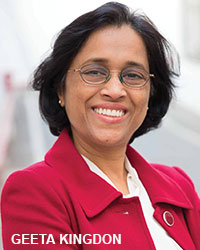 While the rest of the world has been experimenting with sweeping reform ideas such as school vouchers and direct benefit transfer, the NEP draft doesn’t mention them.
While the rest of the world has been experimenting with sweeping reform ideas such as school vouchers and direct benefit transfer, the NEP draft doesn’t mention them.
The general expectation is that the National Education Policy (NEP) 2019 will be finalised in December, based on the recommendations of the nine-member Kasturirangan Committee which submitted its comprehensive 484-page NEP 2019 draft report to the Union HRD ministry on May 31. Although the NEP draft contains some excellent isolated recommendations, I believe it’s a feeble prescription for the gargantuan problems confronting K-12 education in particular.
While the rest of the world has been experimenting with sweeping reform ideas such as school vouchers and conditional cash transfers (aka direct benefit transfer or DBT), the NEP draft doesn’t mention them, even though they should be the central plank of school governance reforms to ensure institutional accountability. This is surprising as the BJP/NDA government at the Centre has used DBTs to great effect in several spheres (farmer subsidies, Ujjwala LPG gas subsidy, etc) providing the benefit directly to the citizen-voter, who is happy to receive purchasing power in her hand. Switching indirect subsidies to DBTs has led to cancellation of 80 million fake beneficiaries from official records, enabling savings of Rs.1.1 lakh crore.
The same danger exists when transferring public money to private schools as reimbursement for educating socio-economically disadvantaged children under the RTE Act. In 2017, India Today reported that some private schools in Madhya Pradesh had connived with state government officials to siphon Rs.600 crore from government coffers by way of fraudulent claims for tuition fee reimbursements of poor children admitted under s.12 (1) (c) of the RTE Act. This could have been prevented if the DBT system had been used to transfer the reimbursement amount to parents directly. Moreover, DBTs would empower millions of parents who will have purchasing power in their hands to hold schools accountable for the quality of education they provide to children.
Another flawed proposal of the draft NEP that requires close scrutiny is the KR Committee’s recommendation to double public education expenditure to 20 percent of the government budget. This recommendation is ill-advised under current circumstances as there is massive wastage of public money on school education provision.
While the draft NEP acknowledges the problem of unviably small public schools (Chapter 7 casually shares that 28 percent of all government primary schools in the country have less than 30 students), it does not diagnostically probe the extent of the emptying out of public schools which have rendered them both pedagogically and economically unviable, as a precursor to policy prescription.
My own analysis of raw official DISE data indicates that between 2010-11 and 2017-18, aggregate enrolment in public elementary (class I-VIII) schools plunged by 24 million, while enrolment in recognised private independent (unaided) schools rose by 21 million children (the rest presumably migrated to unrecognised private schools not included in DISE).
The hard reality is that in the academic year 2017-18, 427,000 of the country’s 1.35 million (41 percent) government elementaries in 20 major states had less than 50 children on their muster rolls — an average enrolment of 27.9 pupils per school, resulting in a teacher-pupil ratio of 1:12, signifying an acute teacher surplus. On these 41 percent of under-populated public schools, government (Centre plus states) expenditure is Rs.51,917 per pupil by way of teachers’ salaries — equivalent to 45 percent of the per capita income of India and 134 percent of the per capita income of Bihar that year.
Historically, all major increases in public education expenditure have occurred coterminously with Central Pay Commissions raising the salaries of government school teachers at a furious rate. In Uttar Pradesh, for example, between the last year of the Fifth Pay Commission (2008) and the first year of the Seventh Pay Commission (2016), government teachers’ salaries rose by 15.9 percent per annum, when inflation increased only by 3-3.5 percent per year. Government teachers’ remuneration in India is eight multiples of the country’s per capita income, compared with China’s 0.9 (i.e, less than 1).
Therefore, incremental resources for K-12 education will prove beneficial only if it can be ensured that teachers won’t again appropriate the proposed doubled funding for themselves (as higher salaries), and if doubled resources are used for providing larger child scholarships by way of DBTs. If larger amounts are transferred to households for children’s school education, school managements will be compelled to improve infrastructure, provide safety, computers, libraries, extra-curricular activities, etc for their survival.
The draft NEP has ignored the root inefficiency afflicting public education, viz, the school and teacher accountability deficit in public education. It has ignored this elephant in the room. Till this elephant can be seen, and tamed via DBT funding of schools, the well-intentioned and laboriously crafted provisions of the NEP will come to naught.
(Geeta Gandhi Kingdon is professor, University College London (UCL), and president, City Montessori School, Lucknow)

























